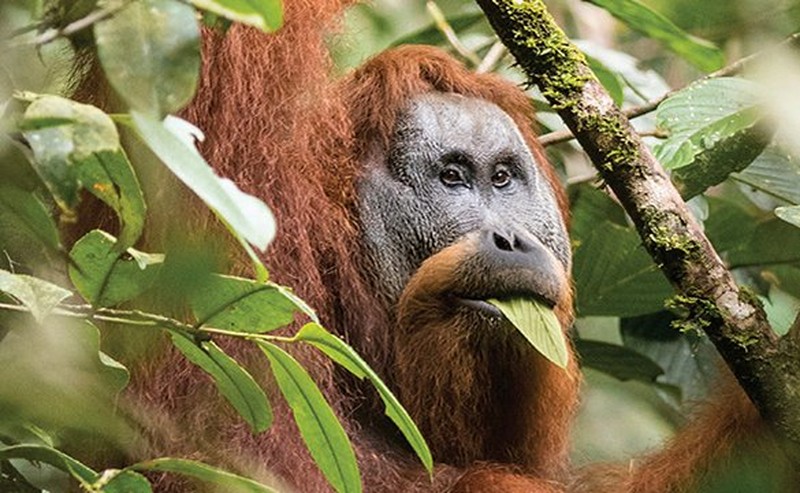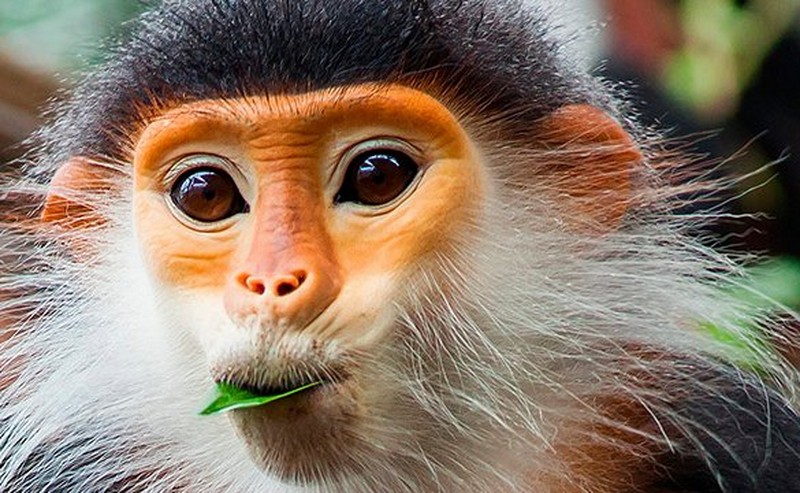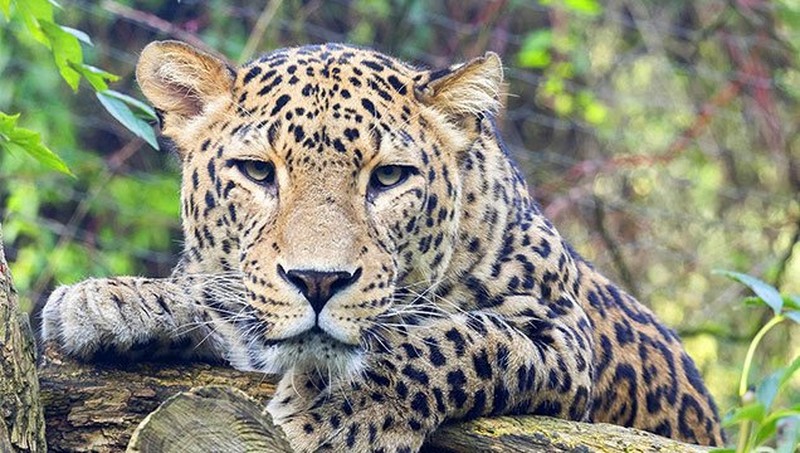WORLD BIO-BRIDGES MISSION
IN 2016, WE EMBARKED ON A WILD MISSION: TO BUILD BRIDGES IN NATURE.
Our World Bio-Bridges Mission had a very specific aim: to restore ‘bio-bridges’, or wildlife corridors, in damaged landscapes to help endangered species reconnect, mate and thrive – all the while helping local communities to live more sustainably.

Through our World Bio-Bridges Mission promotions our brilliant customers directly helped build bio-bridges, through donations collected from selected products or purchases at participating stores. These funds helped improve the livelihoods of local communities and helped protect the habitats of animals like Reggie, a red-shanked douc, one of the types of endangered creatures in Vietnam. With your help, we’ve contributed towards the building of an incredible 75 million square metres of bio-bridges. We’re extremely proud of this mission, and although it has been completed, our fight to protect nature continues.

BATANG TORU, INDONESIA
In Indonesia, we helped fund the work of Orangutan Land Trust and Yayasan Ekosistem Lestari in the Batang Toru Ecosystem, Sumatra. The project has helped to protect the southernmost population of critically endangered orangutans and endangered Sumatran tigers. The funding to the Orangutan Land Trust also supported the work of Yayasan Ekosistem Lestari and the Sumatran Orangutan Conservation Programme.
In December 2017, scientists discovered a new species, the Tapanuli orangutan, within this bio-bridge. With only 800 of the species left, it’s officially the most endangered great ape in the world.

KHE NUOC TRONG, VIETNAM
In 2016, we launched our first bio-bridge project in the Khe Nuoc Trong Forest, Vietnam. Some of the key threats facing Khe Nuoc Trong are hunting, poaching and small-scale logging for timber. Working alongside the World Land Trust and local partner Viet Nature Conservation Centre, funding has gone towards protecting the forest and the many species that call it home, including the endangered red-shanked douc monkey.
We chose Khe Nuoc Trong for its biodiversity, and to help raise awareness of the increasing loss of habitat around the world in locations that are perhaps a little ‘under the radar’.

GARO HILLS, MEGHALAYA, INDIA
Together with World Land Trust and its local partner Wildlife Trust of India, we’ve helped protect the Indian elephant and Western Hoolock gibbon in the Garo Hills, India, by creating village reserve forests and restoring 6 million square metres of habitat.

SIERRA SANTA CRUZ RESERVE, GUATEMALA
A project managed by World Land Trust and local partner Fundación para el Ecodesarrollo y la Conservación (FUNDAECO) is located in the Sierra Santa Cruz Reserve, Guatemala. World Land Trust launched their Treasure Chest appeal in October 2017 and we donated £100,000 of the £625,000 total.
Since the late 1990s, this area has seen two deforestation drivers: exponential growth in palm oil production and the cocaine drug trade, creating rich land owners who push the expansion of cattle ranching that greatly impacts the forest. FUNDAECO aims to provide alternative employment and income generating opportunities for the local Q´eqchí communities located south of the reserve. This reduces the long-term possibilities of encroachment for illegal resource extraction.
We’re committed to helping people as well as the planet. Local people are a vital part of this project and FUNDAECO works closely with the nearest community to the reserve. Here, they are carrying out two development projects: training Q’eqchí women as tourism caterers and the aquaculture of native species of fish with local fishermen.

SELOUS-NIASSA WILDLIFE CORRIDOR, TANZANIA
In Tanzania we worked with new partners, Mpingo Conservation & Development Initiative (MCDI), an NGO who to date have protected over 421,000 hectares of land. Their mission is to advance forest conservation and community development in Tanzania by facilitating sustainable and socially-equitable uses of forest resources.
This project tackled the key barriers to expanding sustainable community forestry within the Selous-Niassa Wildlife Corridor. The aim of this project was to protect some of the world’s endangered species and empower seven communities to generate sufficient income to cover 100% of the costs of managing their locally-protected forest reserves, ensuring the long-term conservation of natural forests.
Two nationally recognised elephant migration corridors pass through these forests and it also contains over half of Africa’s remaining wild dog population. Other key mammals under threat in local forests include the African lion, leopard and hippopotamus.

FERGANA VALLEY, SOUTHERN KYRGYZSTAN
Working with conservation charity Fauna & Flora International (FFI), this project focussed on the protection of the wild fruit and nut forests located in the Fergana Valley.
These forests of Central Asia are of global conservation importance, but they have declined dramatically and continue to decrease annually with many species already on the verge of extinction. Only 5-10% of the original forested area remains.
Working with FFI, we pledged to restore 4 million square metres of forest, working with local communities, forestry units and local government through planting, protection and regeneration activities for native threatened tree species. Their focus is on bridging fragmented forests and enhancing tree numbers by 10,000 to increase forest connectivity and health.

NOOSA, QUEENSLAND, AUSTRALIA
Tree clearing across Queensland, Australia has recently reached catastrophic levels. The Noosa Biosphere Community is passionate about protecting Noosa’s remaining koalas and koala habitat. Across Australia, but particularly in Queensland, koalas are in the midst of a significant decline, mostly as a result of habitat destruction, including bushfires.
We wanted to support and raise awareness of this project and the growing threats facing habitat in developed countries like Australia. With its funding of £50,000, we helped kick-off Noosa’s 10-year project, raised awareness and funded the planting of 12,000 eucalyptus trees (koala food!). This enabled the reinstatement of koala habitat of over 300,000 square metres of cleared land which will create a corridor connecting remnant vegetation in the north east of the site.

WYE VALLEY, GLOUCESTERSHIRE, ENGLAND
In the UK, we partnered with conservation charity The Woodland Trust on a project to help protect and connect ancient woodlands in the Wye Valley and the Forest of Dean. The Woodland Trust is one of the UK’s leading woodland conservation charities, aiming to improve biodiversity, enhance people’s enjoyment of woodlands, and highlight the role that trees play in cleaning air and water, storing carbon, preventing flooding and benefitting health and wellbeing.
Improving connectivity between the Wye Valley and the Forest of Dean could create one of the largest woodland ecosystems in England and assist with the long-term aim of rewilding this area through the reintroduction of pine martens.

CAUCASUS WILDLIFE REFUGE, ARARAT PROVINCE, ARMENIA
In partnership with Foundation for the Preservation of Wildlife and Cultural Assets (FPWC), World Land Trust is helping to restore the first ever privately protected reserve in the South Caucasus. There are two serious threats to habitat in this area. The first is uncontrolled hunting and poaching, which sees the killing of extremely rare species. The second is the degradation and destruction of wildlife habitat caused by illegal logging, plant gathering, overgrazing and human-induced wild fires.
Community engagement is at the heart of this project. Payment for leasing land for conservation will go back into community development projects such as improving road and lighting infrastructure and local schools.

WESTERN GHATS, RATNAGIRI DISTRICT, MAHARASHTRA STATE, INDIA
The Western Ghats is a biodiversity hotspot. We funded £100,000 towards the protection of 2.8 million square metres of habitat. The Western Ghats are a 1,600km chain of mountains that run inland along India’s western coast. They are older than the Himalayas and of immense importance for their exceptionally high biological diversity.
More than 300 globally threatened (IUCN Red Data List) species occur in the Western Ghats, including significant populations of Asian elephants, tigers and the rusty-spotted cat – the world’s smallest cat! The major threat to the forests and biodiversity in this region comes from deforestation as a result of subsidised cashew and mango plantations, logging, construction and lack of enforcement and regulation of forest conservation.

NANGARITZA CANTON, ZAMORA-CHINCHIPE PROVINCE, ECUADOR
The Nangaritza Reserve is located in one of the most biologically and culturally rich areas on the planet. There are a wide range of threatened species in Nangaritza, some of which are restricted to this region of Ecuador and Peru. Threatened mammals in the reserve are the jaguar, mountain tapir, ocelot and spectacled bear.
The greatest threat affecting the reserve is deforestation, which is caused by illegal logging, uncontrolled mining and the construction of a new road that crosses the area. The increase in the number of mines is also increasing the risk of contamination. World Land Trust is working to expand the Nangaritza Reserve in Ecuador through purchasing threatened areas of forest.

NYUNGWE NATIONAL PARK, RWANDA
The Nyungwe National Park (NNP) in southwest Rwanda is the country’s largest and most biodiverse national protected area. NNP is home to more than 200 different tree species; 85 different mammals; 13 species of primate (including the eastern chimpanzee); 278 bird species; 32 amphibians and 38 reptile species! Working with NNP, we funded £100,000 to protect 660,000 square metres of habitat.